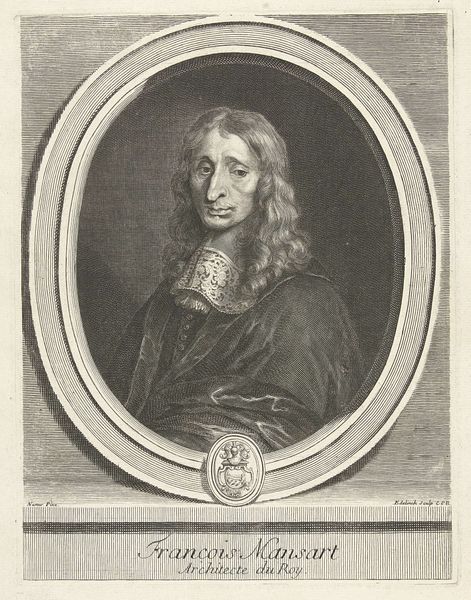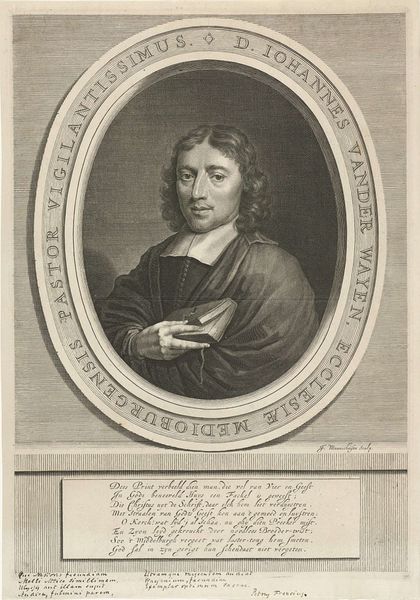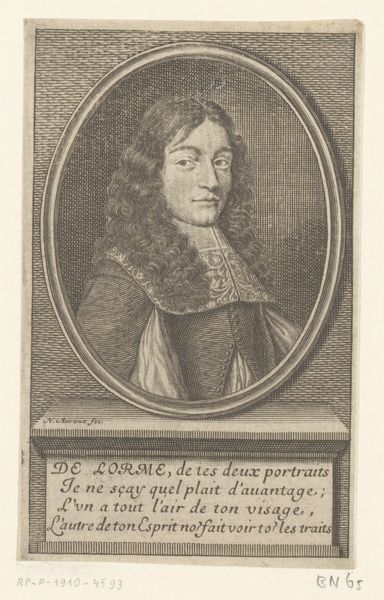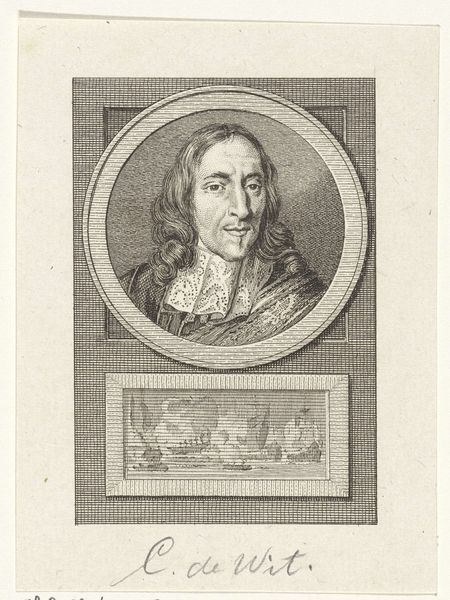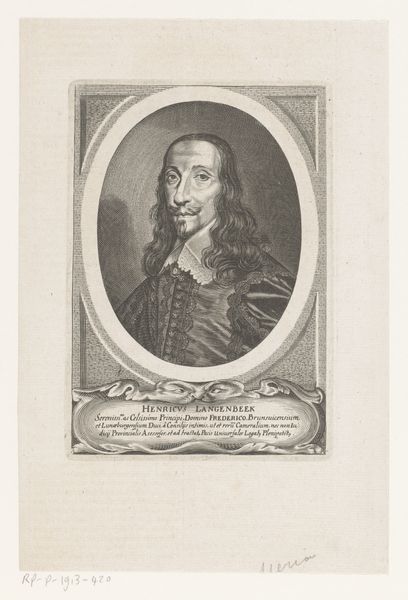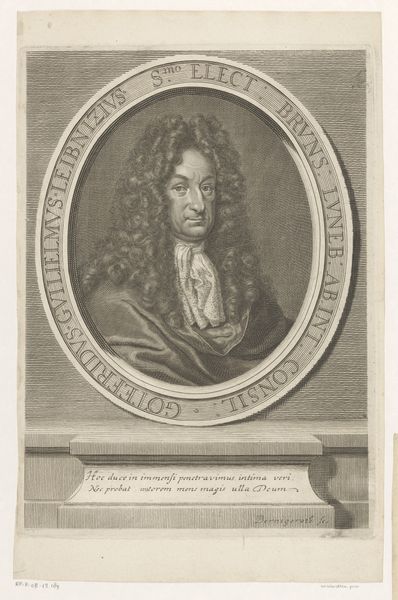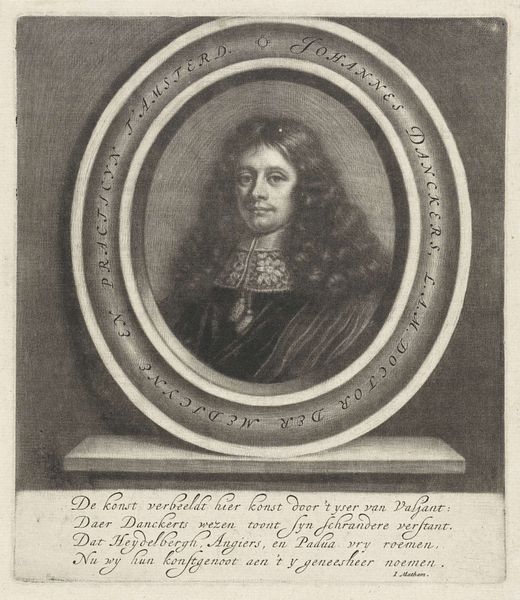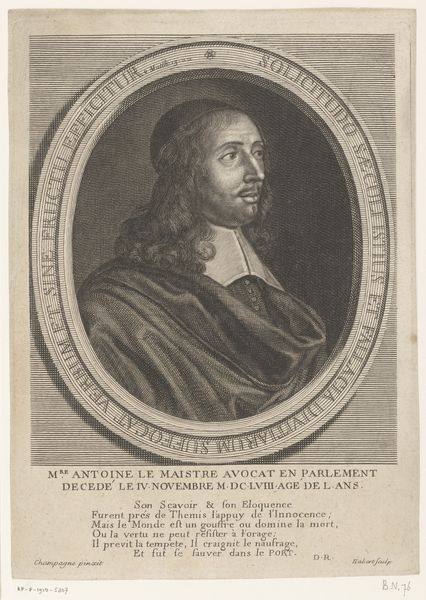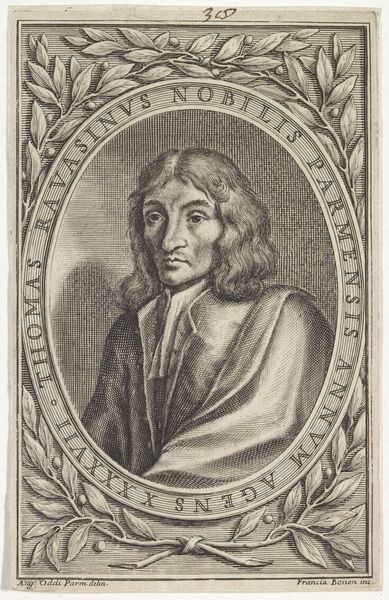
print, intaglio, engraving
#
portrait
#
baroque
# print
#
intaglio
#
old engraving style
#
line
#
engraving
Dimensions: width 140 mm, height 184 mm
Copyright: Rijks Museum: Open Domain
Editor: Here we have a fascinating engraving, "Portret van Jan Antonides van der Goes," created between 1683 and 1731 by Pieter van Gunst. The detail is amazing for a print! It has an introspective mood, doesn’t it? What grabs you most about this piece? Curator: It's a dance, isn’t it, between line and shadow? The sitter is framed by inscription – birth year on one side, death year on the other; like parentheses, these inscriptions become the borders of existence – what do you make of the somber tone and direct gaze, almost like he's daring you to look closer, to read his soul. He really does become more than paper and ink. Do you feel the weight of time etched into those lines? Editor: I do, now that you mention it. The inscription locks the sitter into a definitive period and invites us to contemplate time, remembrance, legacy… Are you suggesting, perhaps, the very medium mirrors those grand themes? Curator: Exactly! Think of the etcher's work: slow removal, deliberate incisions; with enough ink the intaglio gives way, revealing its concealed contents. Don't you find the print’s circular frame oddly confining? What purpose does that choice serve, I wonder? Is it supposed to suggest limitation and/or completeness? Editor: Interesting point! The circular form may enhance intimacy and prompt deeper introspection. Like, here is his world... captured, in full. Curator: Or like we're peering through a porthole into history itself! A memento of fleeting existence and legacy made permanent. It gets the old gears turning! Editor: Totally! I hadn't thought about the implications of the circle and inscriptions at all. So much to unpack from a seemingly simple portrait.
Comments
No comments
Be the first to comment and join the conversation on the ultimate creative platform.


